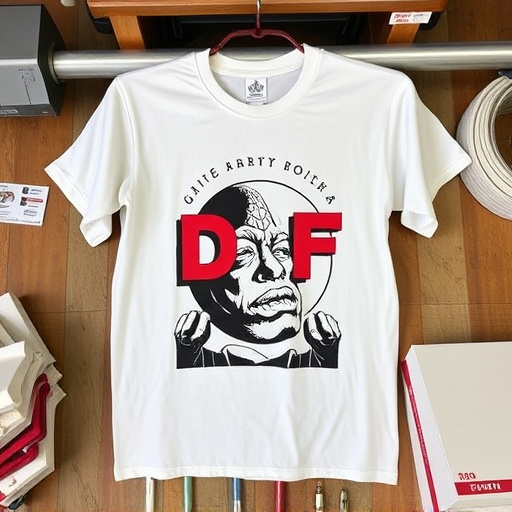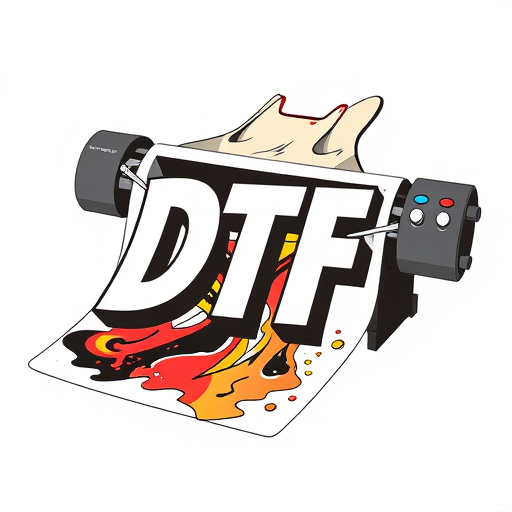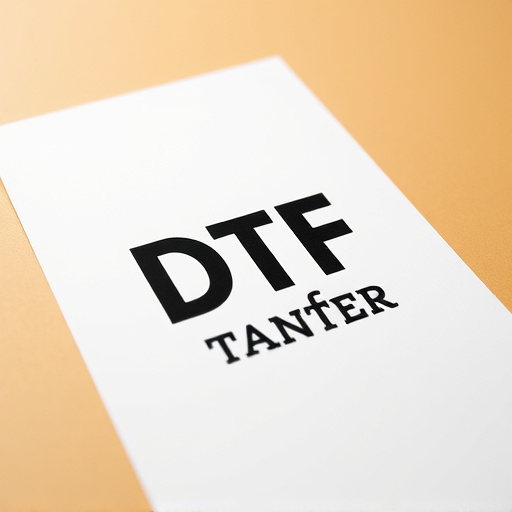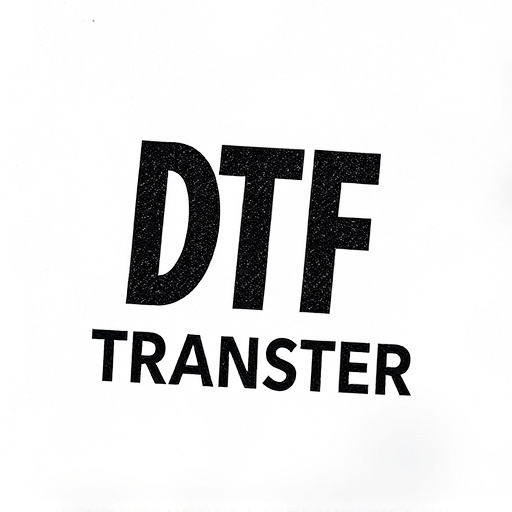Optimizing temperature settings for DTF (Direct-to-Film) printing is crucial for achieving high-quality film transfers. The ideal range is 120°F to 200°F (49°C to 93°C), with lower temps suitable for delicate materials and higher temps for stronger films. Precise control within this range prevents bond issues, heat damage, and maintains media integrity. Preheating the substrate to 68-77°F (20-25°C) ensures flexibility for accurate printing, followed by natural cooling at room temp (also 20-25°C). Exceeding recommended ranges can distort films or cause improper fusions; uniform heat distribution is key. Maintaining a consistent temperature between 266°F to 302°F (130°C to 150°C) and adhering to manufacturer guidelines ensures crisp, clear images without defects. Regular cleaning and maintenance further enhance accuracy and consistency.
Discover the art of achieving flawless film transfers with optimal temperature settings. This guide explores DTF (Direct-To-Film) printing, delving into the science behind ideal temperatures and their impact on quality. Learn how factors like material types and environment influence settings, uncovering the golden range for best results. We also cover preheating, cooling strategies, common mistakes to avoid, and equipment calibration tips, empowering you with the knowledge to master DTF Printing.
- Understanding DTF Printing and its Ideal Temperatures
- Factors Affecting Temperature Settings
- Optimal Temperature Range for Best Results
- Preheating and Cooling Considerations
- Common Mistakes to Avoid with Temperature Control
- Tips for Calibrating Your Equipment
Understanding DTF Printing and its Ideal Temperatures

Understanding Direct-to-Film (DTF) Printing involves optimizing temperature settings for achieving high-quality film transfers. This process replicates traditional photochemical techniques, allowing users to apply images directly onto various surfaces. Ideal temperatures for DTF Printing typically range between 120°F and 180°F (49°C to 82°C). Lower temperatures might result in inadequate bonding, while excessively high heat can cause unwanted degradation or warping of the film or substrate.
The specific temperature within this range should be chosen based on factors like film type, ink composition, and the surface being transferred. Heavier inks or more robust films may require slightly higher temps, while delicate materials necessitate lower settings to prevent damage. Precise control over these temperatures ensures that the final transfer not only looks pristine but also lasts for years to come.
Factors Affecting Temperature Settings

When setting the temperature for applying film transfers, several factors come into play. Firstly, consider the type of film and its specific requirements. Different films may have varying ideal temperatures due to their composition and intended use, such as DTF Printing (Direct-To-Film) or traditional printing methods. The substrate being transferred also plays a crucial role; materials like fabric, paper, or metal can each necessitate unique temperature adjustments to ensure optimal adhesion without damaging the surface.
Additionally, environmental conditions significantly affect temperature settings. Humidity levels and ambient air temperature can impact the drying process and the overall effectiveness of the transfer. In humid environments, lower temperatures might be necessary to prevent over-drying or delamination, while in drier climates, slightly higher temps could enhance adhesion. It’s essential to account for these variables to achieve consistent, high-quality results during the film application process.
Optimal Temperature Range for Best Results

The optimal temperature range for achieving the best results in DTF (Direct-to-Film) printing is between 160°F to 200°F (71°C to 93°C). This range ensures that the film transfer adhesive sets properly while preserving the integrity and quality of the original media. Temperatures below this range might result in an insufficient bond, leading to lifting or bubbles, while exceeding it can cause excessive heat damage to the delicate materials, distorting colors and details.
Maintaining the ideal temperature is crucial for a crisp, clear transfer without any post-processing required. Most DTF printers come with temperature control settings that allow precise adjustments, ensuring you can tailor the process to different types of film and substrates. Remember, slight variations in temperature might be acceptable for certain materials, but consistently staying within this general range will yield the best overall outcomes.
Preheating and Cooling Considerations

When preparing for a film transfer, preheating is a crucial step that ensures optimal adhesion and quality. Ideally, the surface temperature should be around 20-25°C (68-77°F) before applying the DTF Printing process. This range allows for adequate flexibility in the substrate, facilitating a smooth and accurate transfer. Preheating can be done using heat guns or heating pads, ensuring even distribution of warmth across the entire area to be transferred.
Similarly, proper cooling is essential after the transfer to set the adhesive and prevent curling or warping. Letting the transferred film cool down naturally at room temperature (around 20-25°C) for a few hours helps achieve this. Rapid cooling with an air conditioner or fan can also be effective but may increase the risk of wrinkles or bubbles forming if not done carefully. Remember, these considerations are key to achieving crisp, long-lasting results in your DTF Printing projects.
Common Mistakes to Avoid with Temperature Control

When setting temperature controls for film transfers, especially in DTF (Direct-To-Film) printing, it’s crucial to steer clear of common pitfalls. One major mistake is exceeding the recommended temperature range. Heat that’s too high can cause the film to melt or distort, resulting in a poor-quality transfer with visible artifacts. Conversely, insufficient heat may fail to fuse the film properly to the substrate, leading to peeling or incomplete transfers.
Another blunder to avoid is inconsistent temperature application. Hot spots or uneven heating across the print bed can create variations in the transfer process. This not only affects image quality but also increases the likelihood of misalignments and air bubbles. Always ensure even heat distribution and stick to the manufacturer’s guidelines for optimal temperature settings tailored to your specific film type and printing material.
Tips for Calibrating Your Equipment

When calibrating your equipment for DTF (Direct-to-Film) printing, maintaining consistent temperature is key to achieving high-quality transfers. Start by ensuring your film and transfer paper are at room temperature before use; this helps prevent warping or curling during application. Next, adjust your heat press or iron settings according to the manufacturer’s guidelines and the type of film you’re using. A common range for DTF printing is between 130°C to 150°C (266°F to 302°F), but this may vary, so always refer to the specific product instructions.
Visualize your desired outcome: crisp, clear images with no burn marks or smudges. Calibrate your press time and temperature accordingly, practicing on scrap material first to ensure optimal settings before applying them to your final transfers. Regularly cleaning and maintaining your equipment can also improve accuracy over time, ensuring consistent results for every film transfer project.














